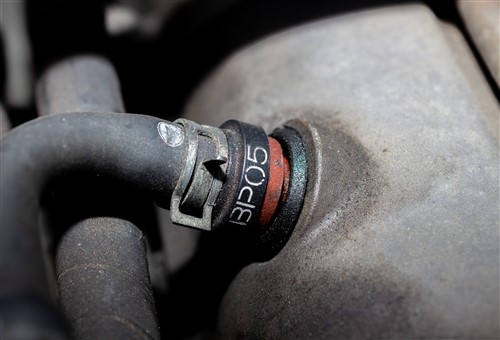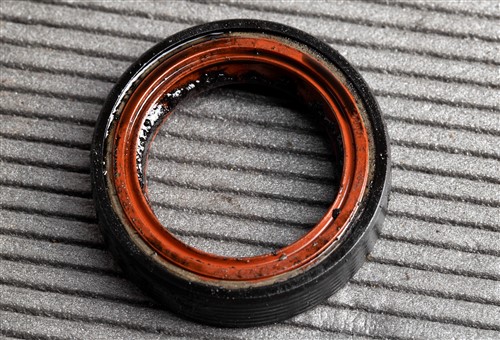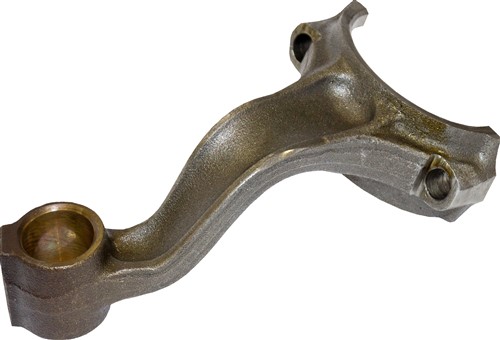
Wouldn’t it be nice if all crankcase ventilation systems were still as simple as the example shown here? Sure, it would be, but the days of “plug-and-play” PCV valves are long gone. Today, PCV systems are not only complicated; some components are also often inaccessible and difficult to access. In fact, in the case of some modern Mercedes-Benz engines, we often have to remove some engine components and even an engine mount to reach Mercedes-Benz's latest version of the PCV valve shown above.
Nonetheless, the PCV system on modern Mercedes-Benz engines plays a critical role in emission control, but the downside of these systems is that they require regular maintenance and service to remain effective as emission control systems. So, if you have not had much exposure to modern Mercedes-Benz engines in general, and to modern Mercedes-Benz PCV systems in particular, this two-part article will explain the operating principles of this critically important system in some detail. Before we get to specifics, though, we need to look at-
While we all know and understand that a fully functional PCV system on a modern Mercedes-Benz engine removes oil droplets/mist and water vapour from the crankcase, the PCV system also performs two other functions that we often do not think about or appreciate. In practice, the failure of a PCV system on a modern Mercedes-Benz engine can have serious consequences apart from raising emission levels, so let us look at the additional functions of a PCV system, starting with-
Oil seal protection

How often have you encountered recurring crankshaft oil seal failures without realising that the root of the problem might be a defective or malfunctioning PCV system? We have all been there: we replace a leaking crankshaft seal only to have the customer return a few weeks (or sometimes days) later with the seal leaking again.
We have also blamed various things for the recurring leak: the poor quality of aftermarket seals, the lack of adequate elbowroom in modern engine compartments, and sometimes even dirty or contaminated engine oil that grinds away the seal's sealing lip. However, if we stop and think about how oil seals work the most likely cause of recurring oil seal leaks is none of the above but an excessive positive pressure in the crankcase, and here is why-
Contrary to popular belief, the sealing lip of a radial oil seal is never in direct contact with the shaft that rotates within the seal. What happens is that the shaft's rotation establishes a hydrodynamic film of oil* between the sealing lip and the shaft's surface, and as long as the shaft, which (for the purposes of this discussion) is the crankshaft, rotates, the protective film of oil between the shaft and the seal will remain intact and evenly distributed around the circumference of the shaft.
* We need not delve into the proposed mechanisms here that a) establish the oil film between the shaft and the seal and b) the proposed reasons why the shaft's rotation does not expel a continuous flow of oil past the seal’s sealing lip. Note that the use of the word "proposed" is deliberate since nobody has yet been able to demonstrate the physics that explains the establishment and maintenance of protective hydrodynamic oil films in radial oil seals.
However, when some critical parts of the PCV system fail or malfunction, the resulting excessive positive pressure in the crankcase could force the oil seals’ flexible sealing lips to disrupt the protective oil film. This condition is roughly analogous to boundary lubrication conditions that arise between two sliding metal surfaces when a lubrication system fails. When this condition is present between a rotating metal shaft and a radial oil seal, the lack of lubrication between the seal and the shaft creates high temperatures that cause the seal to harden and become brittle.
Once the seal has become hard and brittle, continued contact with the rotating shaft tears microscopic pieces from the seal's sealing surface as the shaft rotates. If these high temperatures occur over extended periods, the seal’s sealing surfaces could be worn away almost entirely, which, apart from grooves worn into the shaft, is exactly what we (often) see on radial oil seals that leak severely.
Of course, long use also causes radial oil seals to harden and become brittle, but in the absence of excessive positive crankcase pressures, this process usually takes many years before a seal begins to leak. Therefore, if we take the problem of recurring crankshaft oil seals one step further, we should realise that the problem has only two potential causes- excessive positive crankcase pressure or dirty / contaminated engine oil that wears away the seal.
However, as a practical matte, the problem with blaming worn oil seals on excessive crankcase pressure is that both positive and negative crankcase pressures are so slight that neither can be measured accurately with conventional pressure or vacuum gauges. Apart from an oscilloscope and a pressure transducer, the only other tool that can measure these values accurately is a manometer, which we will discuss later on in this article. This brings us to the second additional function of PCV systems on modern direct injection Mercedes-Benz engines, which is-

Although neither the physics nor the chemical processes that cause low-speed preignition are yet fully understood, the phenomenon of low-speed preignition is so-called because it occurs in direct injection petrol engines when the engine operates at low speed and under a high load at the same time. While small displacement engines with forced induction are the most affected by low-speed preignition, it can also occur on larger engines with or without forced induction, but note that low-speed preignition is as destructive in large engines as it is in small engines because the effect low-speed preignition is akin to hydro locking the engine while it is running. The bent connecting rod shown above is a common result of this effect.
Nonetheless, what is certain about low-speed preignition is that it occurs early in the compression stroke when a mixture of oil mist/droplets, minute fuel droplets, and residual air in the cylinders auto-ignites, i.e., the mixture ignites without a heat source such as a glowingly hot piece of carbon deposit.
It is important to note that no carmaker has yet found a way to prevent or eliminate low-speed preignition. Nevertheless, unlike most other car manufacturers, Mercedes-Benz has recently begun to incorporate oil catch cans into their PCV systems to remove oil droplets and some other volatile substances from the mixture of gases the PCV system extracts from the crankcase before the mixture enters the intake system.
Oil catch cans are reasonably effective at reducing the incidence of low-speed preignition in most, if not always in all modern small-displacement Mercedes-Benz engines. However, their downside is that oil catch cans are only effective if a) the oil catch can is not clogged or over saturated with oil, b) the engine is not overfilled with oil as is often the case, and c) all the components of the PCV system work as both designed and expected under all normal engine operating conditions.
Experienced technicians might see all of the above as a major digression from the main focus of this article, which is about the operation of PCV systems on modern Mercedes-Benz engines. However, this article is also directed at inexperienced mechanics, and if you fall into this group among us, you should know that apart from the above mentioned problems, some defects and malfunctions in modern Mercedes-Benz PCV systems could also cause the following issues, depending on the nature of the problem-
-and others that include excessive exhaust smoke in severe cases. You should also know that since PCV systems (and components) are among the most ignored and overlooked systems on Mercedes-Benz (and other makes) vehicles, we often tend to look for the causes of the problems listed above in the wrong places.
Of course, the problems listed above can also be caused by things that do not involve the PCV system, but the point is that we will often not know whether the above-listed problems are (or are not) caused by defects in the PCV system unless we inspect and test the PCV system when we encounter one or more of the problems listed above, which leaves us with-
In Part 2 of this article, we will discuss the actual inner workings of PCV systems on modern Mercedes-Benz engines in some detail, as well as what to look out for when you encounter faults and defects in a modern Mercedes-Benz PCV system for the first time.